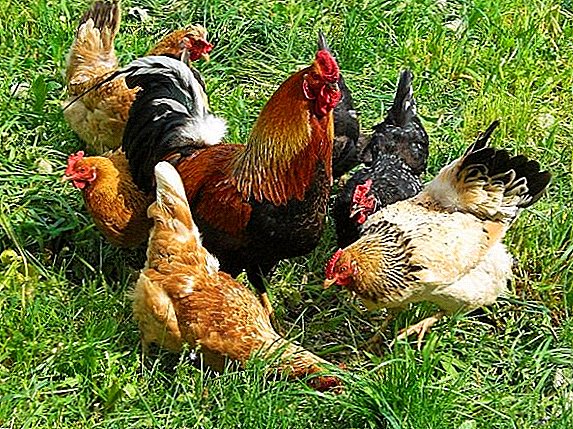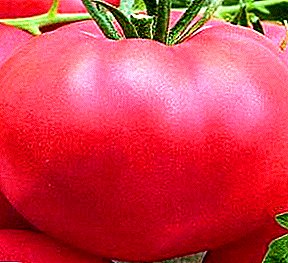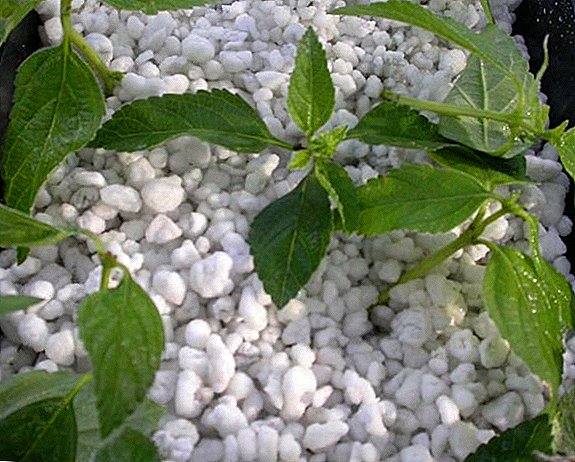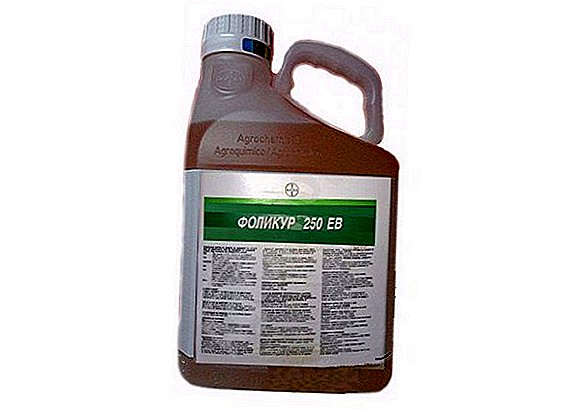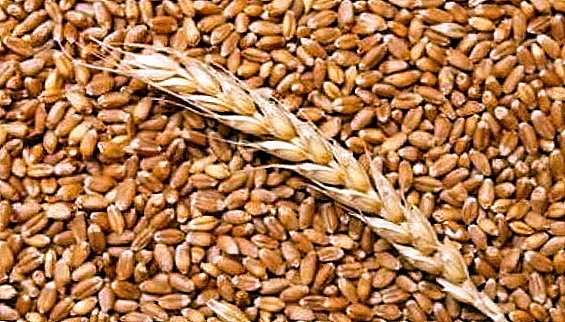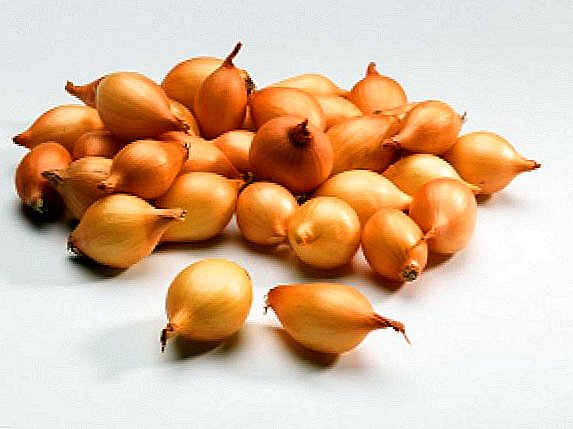
Onion is one of the most frequently used vegetables, without which it is difficult to imagine at least one national cuisine.
After all, having a pungent smell and aroma, it acquires very sweet notes when it is heat-treated.
However, cooking is not the only known way to use this vegetable, because it is often used in medicine, as an antiviral drug and as an anesthetic for burns.
Thus, it is practically impossible to imagine the garden of an ordinary person without an onion, although many people still know very little about the features of his breeding and planting. We will fill in the article below to fill in these gaps of knowledge.
What is sevok and how to plant it? We answer the most popular questions of gardeners

Sevok - this is essentially the annual onion seedlings that were grown from seeds. They are planted only in spring, and by the end of the second year they produce a very good harvest of onions.
This method is the most common throughout the CIS countries and is mainly used for breeding the sharpest combs of this vegetable, since it is believed that their seedlings are stored the longest. In addition, the method of planting onions with a sev is the only possible one in the presence of sandy soils (it is practically impossible to grow onions from seeds on them).
With the help of a sevka, it is possible to obtain very high yield results, which on well-irrigated and fed soil can reach 45 kilograms from an area of 10 m2.
Among merits Sevka many note and 100% seedlings, even in bad weather conditions. Moreover, in this case, the crops ripen in shorter periods: the growing season of the bulb is fully completed in 80-90 days after the germination of the planting itself.
In general, such an onion does not even require a large amount of watering and fertilizing, since it has a significant supply of nutrients and moisture in its bulb, and the missing can be obtained from the soil due to a well-developed root system. There is also a good maturation of the dense scales of such onions and its long-term preservation in the winter period of time.
What conditions are important for planting and growing onion sets

Like all plants, onions are very fond of sunlight and warmth. With their deficiency, this vegetable will grow very slowly and slightly, its leaves will be thin and dull, and as a result the harvest will be very small.
Thus, the bed for onions should be in the open, it does not need to be planted with tall plants, such plants should not grow from the southern or southwestern part of the bed.
Being engaged in preparing the beds should be taken into account and what plants grew on it before. In particular, onions cannot be grown on the same bed for two years in a row; it cannot be planted after garlic.
Cucumbers and carrots are bad forerunners for onions. The fact is that they are depleting the soil and there will be no nutrients necessary for the onions, and also, in the soil there can be fungi of pests or diseases that can affect the bulbs. Therefore, this plant is best planted after various sideratov, tomatoes, cabbage and all types of legumes, as well as potatoes.
That is, onions are predominantly grown after those crops for which a large amount of various fertilizers, especially organic ones, are planted.
A very important condition that ensures good growth of onions is the type of soil and its level of fertility. This plant is well suited for light soils, such as loam.
If the soil is not fertile enough, this can be corrected, but it is important that it ensures easy growth of the roots and easily passes moisture through it. The latter is a very important condition for good growth of onions, but its overabundance can also harm.
For this reason, it is necessary to take into account the level of groundwater, which in spring can even protrude above the soil surface (in this case, planting is strictly NOT recommended).
Attention should be paid to the level of acidity of the soil in which you are going to plant sevok. If this level is too high, the plant will poorly absorb nutrients, and with it, develop poorly.
Also, in such soils, onions of powdery powdery mildew, which in the scientific world is referred to as pereosporosis, are particularly often affected. To avoid this, acidic soils are recommended to lime, and it can even be done in the fall.
What is important to know about site preparation for planting a sept?

Preparation of the site for planting onions - it is his digging and feeding. Moreover, the first is usually done in the autumn, when the soil is turned over the entire length of the spade, then repeated, in the springtime, will be much easier and faster.
The looser the ground, the faster and better the onion will grow. Indeed, thanks to loosening, the soil is saturated with a large amount of oxygen and increases many times its ability to pass moisture.
Also, to improve the agrophone, it is very important to apply the necessary amount of fertilizer to the soil. You can feed it already in the autumn, while digging. It is very good to bring in organics, represented by salted manure or peat compost.
Already in spring, soil fertility increases due to mineral fertilizers. However, making them at the same time and in large quantities is not worth it, since it does not respond very well to such bows. It is better to divide them into 4 parts, the first of which to make when preparing the soil, and the other three during the growing season.
Tips experienced gardener:
- Feeding up the soil for planting onions is better not to use fresh manure. After all, it can cause diseases of the plant, and produce a large number of weeds in the garden.
- it is impossible to add organic matter and lime to the soil at the same time, since they can enter into a reaction that is not quite good for soil fertility, reducing the amount of nitrogen in the soil.
Another important disadvantage is that fresh manure greatly stimulates the growth of the above-ground part of the bulb, that is, its leaves, which occurs with significant damage to the bulb itself.
How do I prepare the seed bulbs for planting in springtime?

We usually purchase sevok in the market or store, because growing it ourselves from seeds is rather troublesome and not easy. But, after the purchase, he in no case immediately landed.
At first it should be dried very well, sending out the bulbs in a very thin layer in a warm place (but not on batteries and not where the air is heated by heaters).
Household sevka, which is usually recommended to be stored at a temperature of 18ºС, should also be dried and heated at higher temperatures. In particular, at first it is kept for 15-20 days in a room with a temperature of about 20 ºС. At the expiration of this time, the bulbs should be placed in a room with a temperature of 30 to 40 ºС, but it is worth not more than 10 hours to keep them in such an environment.
Thanks to such procedures, all the growth forces of the seeding start to activate immediately, which accelerates its rooting after planting. In addition, due to this, it is possible to prevent the onion leaf marksmanship. But, on the other hand, there is a danger of overheating such planting material, so be attentive to the process of drying and heating it.
Very good response to the growth of onions processing seed with the help of growth stimulants and the formation of roots. In particular, the bulbs can be treated with solutions of very common and well-known drugs - "Humisol", "Growth-1" or "Zircon".
Such drugs can quite successfully be replaced by a complex solution made from mineral fertilizers - potassium salt, nitrogen and superphosphates. Hold the bulbs in this solution for about 5 hours.
To finally complete the preparation of planting for planting, it is still recommended to be disinfected. This is done by lowering the bulbs either in a weak solution of copper sulfate, for which 1 teaspoon of this fertilizer is used per 10 liters of water, or in dissolved potassium permanganate.
The advice of an experienced gardener: if you do not have enough time and opportunity to carry out the heating of the seeding, then do not panic prematurely. This can be done just before planting, using water heated to 45-50 ° C. She needs to pour onions and leave for 10 minutes, then drain the hot water, and instead fill it with cold water.
Features of planting dates sevka: what weather features should I pay attention to?

It is very difficult to name specific dates for planting a sevka in an open land. After all, the fact is that by doing this too early and by planting bulbs in cold soil, we will achieve only the growth of the arrow of the bow, and not himself.
So, the root system will develop very slowly, and even after the leaves reach their maximum size and stop growing, the bulb will no longer be able to catch up.
But late in planting a good harvest will not succeed, because the soil will become dry by that time, and in the middle zone the plant may not have enough warm season to fully ripen and complete the growing season.
With warm and early spring sevok can be planted at the end of the second decade of April, or in the third. With a colder spring, you need to wait for the moment when the soil warms to at least the depth of one finger.
If the soil temperature is below 12ºС, then you should not even think about planting onions. For this reason, it is worth being attentive to weather conditions and regularly monitor not only the weather outside, but also its forecasts.
Features of the scheme of planting onions with a sevka: how to efficiently use the area of the garden?
Before embarking on the actual planting of the onion, you need to level the soil of the bed and draw it across the rows, and the bulbs will be planted. Thus, it will be possible to immediately predict exactly how many sets will be planted.
However, in order to plant a sevok according to the correct scheme, it is necessary to sort it, selecting in one direction large bulbs, and in the second smaller ones. We think that all of you immediately guessed that with larger bulbs it is possible to get a larger harvest, and therefore the distance between them should be made larger.
Thus, those bulbs that have a diameter of less than 1 centimeter, are planted at a distance of 4-5 centimeters. With the addition to the diameter of each of the next 5 millimeters, the distance between the bulbs should be increased by 1-3 centimeters. But do not forget about the distance between the rows: it is optimal for it to be at least 20 centimeters. This area will greatly facilitate the processing and care of onions, as well as allow sowing dill on it.
Such a planting scheme will not only allow the bulbs to get enough nutrients and not interfere with each other, but also make optimum use of the area of your garden. In addition, the plants will be better ventilated, there will be no serious diseases.
As for the most direct planting of sev in the soil, then at a specified distance from each other, the bulbs just stick into the soil. Naturally, their bottom should be at the bottom.
You should not bury them deeply, as this will negatively affect the germination process. To improve the seedlings, the surface of the soil after planting can be covered with mulch. Greens will begin to break through it in a week, and in another week it will be possible to remove the mulch.
How to understand as a bow that it can already be removed?
The signals that the onion has already fully matured will be the following:
- Young green leaves are no longer formed, and those that are gradually drying up.
- Also, except for yellowing and drying, onion leaves fall, sag.
- Apparent changes onion neck, which becomes softer to the touch and gradually thinned.
- The bulb itself acquires a beautiful color, which is characteristic of its variety.
Also interesting to read about planting winter onions
Rules for the care of onions: how to increase the yield of the crop and protect it from possible pests?

Onions like moisture and water it should be very abundant, but do not forget to take into account weather conditions. In particular, the entire first half of the growing season is carried out 2 times a week.
In July, watering can already be done more rarely, because excess moisture can harm the bulb. But already with the approach of the moment of harvesting, that is, 2-3 weeks before this, watering should be stopped altogether.
Soil fertilizer - increasing the yield of onion plantations
The first feeding of onions can be carried out already 2 weeks after planting, using manure solutions. The following feeding is carried out not earlier than in three weeks.
Mineral fertilizers can also be used, they can even be applied dry and once a season.
Weeding the beds with onions - do you need to keep the soil under the black steam?
The answer to the question asked is yes. Bow need to regularly and carefully weed. After all, in the presence of a large number of weeds on a bed, an increased humidity is formed in the soil, which, in turn, can cause onion fungal diseases.
Also, when "cohabiting" in the same bed with weeds, the neck of the bulb becomes very dense and juicy. In this case, it will be very difficult to dry it, it will not be able to keep it for a long time.
We saturate the soil with oxygen and facilitate the growth of onion roots by loosening
Even before the first shoots of onions appear, the soil needs to be loosened.
Otherwise, it may form a thick crust, which the plant will be difficult to break through.
Loosening is carried out throughout the entire period of onion growth, and at the time of reaching the bulbs of medium size, they need to shovel the soil a little.
This will help to gain more strength growth and soon ripen.
Onion disease prevention: how and when to treat?
Especially often the onion is affected by various fungal diseases, the known pest of this plant is the fungal fly. To avoid having to deal with specific symptoms of such diseases, it is best to carry out preventive treatments.
A very effective solution is using:
- 1 teaspoon of blue vitriol.
- 1 tablespoon of liquid soap.
- 10 liters of water.
All of these ingredients are mixed and using a similar solution can be sprayed onion leaves. It is very important to consider that such processing is carried out only at the stage when the length of the leaves reaches at least 12 centimeters.
Also, the ground is often sprinkled with wood ash. Such treatments are carried out at intervals of 20 days.


